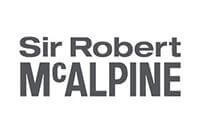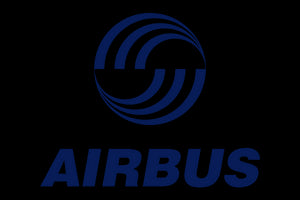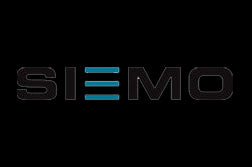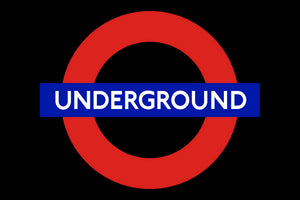There is so much written out there about dust being bad for us that we thought we would try & condense it and make it real.
The Reality.
There is no doubt dust can have a serious impact on our health. The evidence is irrefutable and to argue that it effects everybody else and not me is just nonsense. Over the years we have seen many cases where dust inhalation has destroyed lives. It’s a fact. Dust effects everybody, nobody has special powers to keep it at bay.
The good news is that if you work in a dusty environment there is now much that can be done and it need not cost the earth.
The Health and Safety Executive (HSE) has helpfully categorised dust generated from construction activity into the following:
• Silica dust (from products like concrete, mortar or sandstone)
• Wood dust (from hardwood, softwood, and wood-based materials like MDF)
• General dust (from materials like marble or gypsum)
If you work on a construction site and encounter dust but do nothing about it you are in the firing line for:
• Lung cancer
• Silicosis
• Asthma
• COPD (Chronic Obstructive Pulmonary Disease)
• And many others
And if you think the risk of getting one of these severe illnesses is small, think again. HSE figures show that some 8000 people lose their lives due to cancer every year because they inhale hazardous dust particles. And a further 39,000 suffer from respiratory illnesses caused by the same particles. It’s the small particles of dust that do the damage not the bigger particles – its about the dust you cannot see.
So, if you want to control the risk of harm to yourself and your co-workers, you must keep the level of dust in your construction area at as safe a level as possible.
The HSE provides guidelines for acceptable levels of harmful dust in the workplace. These guidelines include suitable face masks, sound practices (such as limiting the number of people near the job and rotating the workforce) and different methods of dust collection.
What are the three main classes of dust extractors bought today?
- L (Low Hazardous) Class Extractors
- M (Medium Hazardous) Class Extractors
- H (High Hazardous) Class Extractors



L (Low Hazardous) Class Extraction
L Class extractors are what you would find on a typical domestic vacuum cleaner like a Hoover or in a more commercial environment a Henry. They do collect dust, but in the main they collect the bigger dust particles and not the much more harmful & smaller ones.
M (Medium Hazardous) Class Extraction
In recent years L class vacuums have proven to be inadequate on construction sites hence the introduction and now widespread use of M Class dust extractors. The HSE insist on it. An M class vacuum may not necessarily have more suction power than an L Class extractor, but they have far more advanced filters. This is a crucial difference and means you are less likely to suffer health problems.
The HEPA (High-Efficiency Particulate Air) filters you find on most M Class extractors are considerably more effective than the filters on L Class extractors and collect 99.9% of the dust passing through them.
Most L Class extractors collect 90% of dust and although this extra 0.9% may not sound like much, it makes a huge difference. Here’s the science- An L class extractor will let 1 in 100 particles through, whereas an M Class extractor will let through only 1 in 1000. This means that there are ten times fewer particles in every cubic metre of air leaving the M Class extractor.
What is more, the upper limit of particles per cubic metre of air is much lower for an M Class than an L Class: 0.1mg/m3 for the M Class, compared to 1mg/m3 for the L Class.
What does this all add up to when it comes to getting on with your job? To put it simply, when you use an M Class vacuum the air you, and everybody else breaths, is significantly cleaner.
What types of dust and work is an M class dust extractor suitable for?
The simple answer is exactly the same as an L Class vacuum (i.e.. brick, concrete, wood, gypsum etc) but it will come as no surprise that the higher level of filtration you get with M Class dust extraction is the minimum rating allowed on construction sites by HSE.
The advancement in technology of some M Class vacuums now enables you to fit them directly to your power tools removing dust at source. Such technologies have been pioneered by construction specialist brands like Starmix & MAXVAC.
For more details on dust extraction guidelines (and any other safety requirements) you can visit https://www.hse.gov.uk/pubns/cis36.pdf
And remember, if your work involves any of these tasks, you are required by law to use an M Class extractor – otherwise, the consequences can be severe.
So what are the fines, charges and other problems you face if you don't use an M Class vacuum?
We've already talked about the harm that construction dust can do to your health but it can also have severe financial implications. HSE can and does impose penalties to reflect the severity of failing to provide the proper dust extraction on site.
Fines of up to £20,000 have been issued to contractors who exposed their co-workers to unsafe levels of silica dust. Other sites have been closed down and non-conforming contractors removed from sites.
Fortunately, the solution to the problem is nowhere near as expensive. M Class vacuums start at a couple of hundred pounds and come in a range of sizes with an extensive variety of attachments and accessories. Plus, some models can handle wet spillages as well as dry, dusty debris.
You can view the complete range of M Class vacuums we stock here.
Alternatively if you’re feeling a bit overwhelmed and are just looking for quality advice, call us on 0800 980 0105, we’d can’t wait to hear from you.
It's a small price to pay for the long-term health, safety, and wellbeing of all of us that work on construction sites.
Speak with a Dust Expert
Every site and project is different. If you’d like tailored guidance for your specific scenario, our Dust Experts are here to help.














